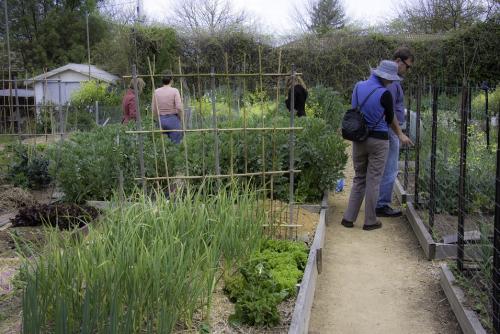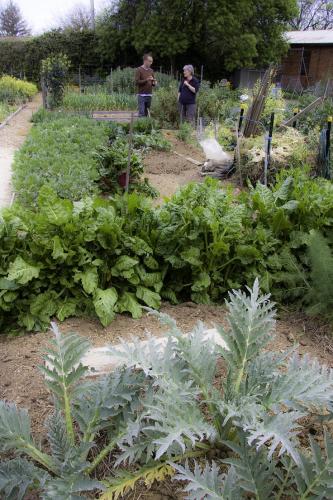Cities feeding themselves
Community gardening is becoming part of a new social movement that is developing around our food supply. Russ Grayson from the Australian City Farm & Community Gardens Network says there is still a long way to go for planners to see the value of community gardens to urban food security and community development.
We don’t know how many community gardens there are in Australia, but we do know their number is increasing. Their growth is propelled by a new community interest in where its food comes from and how it is produced, but equally important to their growth is the need for social contact.
Community gardens are places where people share land — usually municipal land, what councils call public open space — to grow some of what their families eat and to do so cooperatively with others.

A TYPE OF COMMUNITY FOOD SYSTEM
Community gardens are part of a larger nexus of community-based food systems that together make up what we refer to as urban agriculture. Community and home food gardens — the latter being a traditional Australian urban landuse — form what’s known as ‘civic agriculture’ because they are community-based, a part of civil society. Urban agriculture also includes the commercial market gardens, orchards and poultry farms of the city fringe.
One reason behind the recent increase in the number of community gardens Australia-wide is interest from local and, in a couple of states at least, state government.
I wrote what could be the first policy directions document to assist councils facilitate the development of community gardens in 2007. That was written for a Sydney inner-urban council, and within a few years the number of councils adopting policy or process to enable community gardens increased and continues to do so. For a few, community gardening is enabled through local government food security policy.
Through their respective social housing departments, state government in Victoria and NSW support community gardening on social housing estates. Sydney’s inner urban Waterloo Estate had three community gardens for residents of the tower blocks, while in Melbourne the state government has contracted a community organisation, Cultivating Community, to help social housing residents start and manage community food gardens, food co-operatives and a community kitchen. Cultivating Community now employs around a dozen people to do this, opening up employment opportunities in civic agriculture. Adding to the number of people employed in this new sector is the staff role of community garden liaison in local government.
Planning professionals, especially those in local government, were taken by surprise by the rapid upsurge in demand for access to public land for community gardening. This is what partially drove the development of council policy on community gardening, a move which enabled councils to put staff time and a budget to community gardening and to allocate public open space for the gardens.

There is still a long way to go for planners to see the value of community gardens to urban food security, community development and as a new recreational opportunity that make a claim on urban land in the same way that council land is allocated for tennis courts, sporting fields and for the walking of dogs.
Community development workers have been among the first to act on the value of community gardens, focusing on the social aspects and cooperation engendered by shared food production, decision making and responsibility for a parcel of public land. This leads to occasional confusion about where to seat council community garden liaison roles. Do they belong in parks and gardens, community development or planning?
THE NETWORK
As the number of community gardens in our towns and cities started to grow in the 1990s, Darren Phillips, then a PhD student at a Canberra university doing research on community enterprise, set up the Australian City Farms & Community Gardens Network (http://www.communitygarden.org.au/) so that gardeners could share their experience and learnings and help each other solve their problems.
The Network stimulated interest in community gardening and sought to have the gardens recognised as a valid urban landuse, something which, for the most part, it has achieved, although many councils are still feeling their way with community gardening.
At the sixth national gathering of the Network in Hobart this year, speakers made the link between community gardening and the idea of food sovereignty — the right of individuals and communities to freely choose the type of food they want, produced and distributed by means they wish to support. Growing food in community gardens is one way that people enact sovereignty over their food supply. So is buying food from the small to medium scale farmers producing for the domestic market.
This contexts community gardening and places it in the bigger picture as a component of a new social movement that is developing around our food supply.
Russ Grayson is an online and photojournalist reporting on food systems, community initiatives and technology and society. A media contact for the Australian City Farm & Community Gardens Network, Russ has worked in international development in the South West Pacific, local government and urban agriculture.













